New perk! Get after it with local recommendations just for you. Discover nearby events, routes out your door, and hidden gems when you sign up for the Local Running Drop.
If you’ve been holding off on going to the pool—or you haven’t had the option—you’re probably reading this and thinking, “I just need a suit and goggles, what’s the big deal?” Well, there’s (way) more to it than that in a lot of places. And even if you’re one of the lucky few who live in an area with few or no restrictions on gyms and/or open water, there’s a good chance you haven’t been swimming as much as usual. If you’re going to somehow regain any level of swim fitness—and do it in a safe way, both physically and pandemic-ally—you’ll need to carefully rethink your restart. Here, we’ll look at two types of gear to help you get back into the aquatic swing of things: first, the stuff that’ll get you from zero back to swim fitness glory; second, the stuff that’ll help you navigate some of the weird conditions you might experience at a pandemic-treated gym or if you’re heading into open-water training consistently for the first time. But before we do that, a few tips to help as you dip your toes back in:
Plan Ahead
This should go without saying in our new pandemic world, but in some instances you might not even get near the water if you’re not properly prepared. Remember when you used to wake up early, feel like a swim, drive to the pool, and hop in a lane at your gym? Yeah, those days are probably gone for a while. Many gyms and pools—if they’re even open—have lane reservation systems where you have to sign up for your lane time. This actually could be a good thing for a lot of triathletes who have mild PTSD from driving 30 minutes to their pool only to find it packed with aquawalkers. Now at least you know you’ve got your time, but don’t forget you’re not the only one who wants to swim. Some lanes fill up days before; some might fill up minutes after registration even opens. Think back to the days when you waited to nab that popular Ironman registration—now imagine you might have to have that twitchy trigger finger on the mouse every week to get in the water.
Be Open To Something New
If you’re being super careful (or have no other choice) and want to do that majority of your swim training in the open water, first congratulate yourself on a good decision: So few triathletes truly understand the value of majority open-water swim training on their race-day times (when that day finally returns). Your skills and comfort level for race day will grow exponentially, even if your pool speed stays the same. Of course, you’ll have to adapt your workouts from something tightly distance-based to something either time- or stroke-based, but even that is not as big of a deal as you’d think. Simply transpose the distance workouts you already do into the approximate amount of time it would take you to do that repeat (or use strokes) and give yourself easy swimming as recovery rather than time spent on the wall resting. You’ll be stronger and more prepared for the reality of a tri, and you’ll be social distancing like a boss. But (and this is important), there are a few safety items you should invest in, that we’ll talk about below, and you should be sure you’re being smart about swimming near shore, with a (social distanced) buddy, or have a lifeguard or spotter onshore. Also, don’t swim in any new bodies of water without a little bit of local info on the conditions of currents, the bottom beneath, and the quality of the water. For more on open-water swimming, check out our guide to navigating the open water during the pandemic.
Be Efficient/Creative
Even if you’ve mastered the reservation system at your local pool, the clock is probably ticking from the minute you get into the water. That 1-hour 30-ish-minute swim you like to take your time to do might now be condensed into one hour—no more, no less. This means that not only do you need to move through your set quickly, but you might want to think about a dryland warmup or even a post-swim dryland strength set. Either way, think of your time at the pool like a transition area—get your gear off and onto your workout as fast as possible to maximize that water time without rushing through important stuff that takes slow, deliberate time, like drills. If you like longer straight sets, maybe plan on doing those in the open water, and your shorter, faster, more specific sets on your pool days.
Be Patient
This might be obvious, but it also might not be. If you’ve been out of the pool for a long time, it’s going to take quite some time to get even remotely close to your former fitness level. Even though your running and riding might be in midseason shape, your swimming probably isn’t—even if you’ve been keeping up with your strength work. Be sure to start from the ground up, as if it was the winter: work on your technique, drills, and swimming well, way before you try to add in any speed. After technique, work on strength and open-water skills (even if you’re in the pool), then move on to some speed/aerobic work. Better yet, check out our three-week plan for returning to the water for some help from pandemic-era swim experts.
Now that you’ve got a sense of what you’re up against when trying to get back into shape, let’s look at what you’ll need to get back in the water:
FINIS Swimmer’s Swim Snorkel
$30, Amazon.com
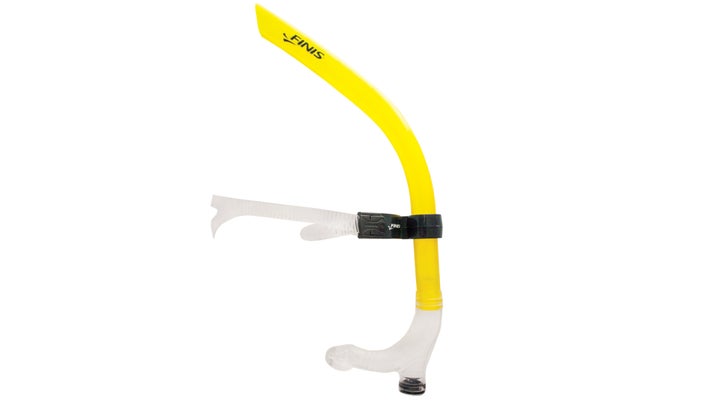
Any time you get back in the water after some time off, it’s super important to be sure your technique is on point before you do anything else. All of the best swim coaches agree that a swim snorkel will help you focus on your stroke while isolating your body position away from turning to breathe. We like this snorkel because it has a one-way purge valve—particularly helpful if you decide to use it in the open water! (Yes, you can do that.)
Eney Buoy
$32, Eneybuoy.com
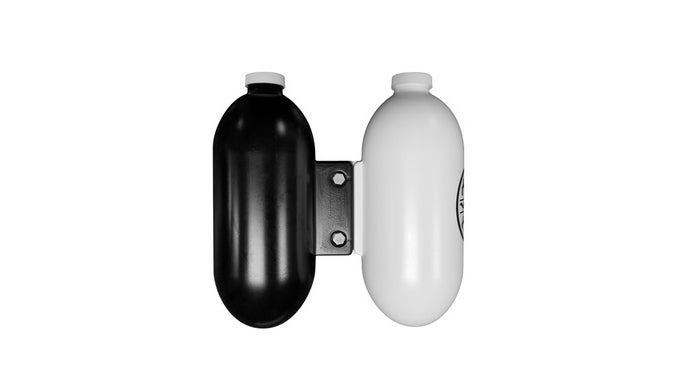
While you’re resetting your swim technique and swim “season,” why not get back in the water with a Swiss-Army-like pull buoy? The Eney Buoy is a hollow, water-fillable buoy that can be used to float your legs for pull sets (or open water) when empty, build strength when full, and stretch the psoas muscles when half-filled. We love the versatility of this tool, as it truly allows you to adapt as your strength increases with each passing week.
Aquasphere Alpha Swim Fins
$37, Amazon.com
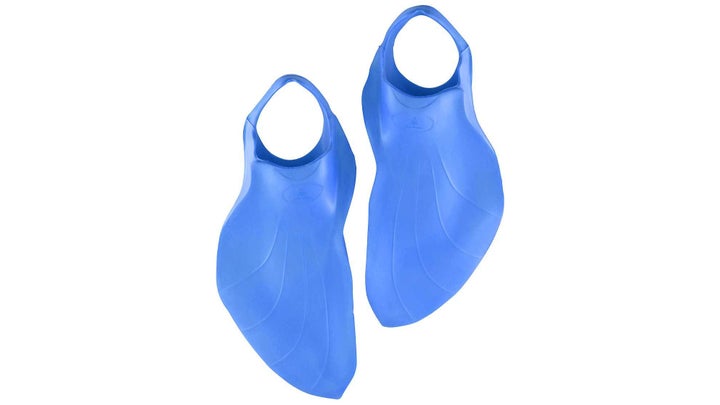
Though super unconventional looking, this pair of fins does a great job of not only propelling you through the water faster—allowing you to work on the front of your stroke more effectively—but because of the shape and floatation, these do a great job of helping to stretch those inflexible “over-run” ankles you’ve likely developed over the last few months as you get back in the water. A great side-effect is that the material on these fins is super soft and spongy, and they float very well—helping with body position and helpful if you’re swimming in the ocean and worried about losing them in waves.
Ortlieb Atrack Bag
Starting at $280, Orgliebusa.com
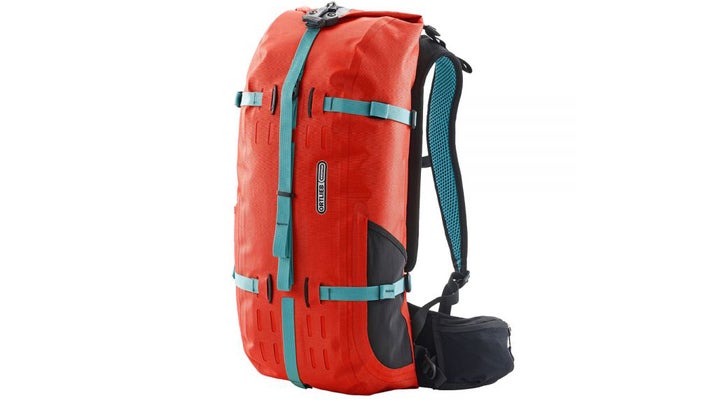
This cavernous bag is perfect for the “new normal” world where gym locker rooms might not exist and keeping all of your gear on/near you at all times is required. The beauty of Ortlieb’s Atrack is that you can lay it on its back—straps up—and open it from the part that would be touching your back, while the waterproof outside repels any sloshing or splashing from the pool deck. From a brand that’s famous for its waterproofing, you can keep everything near your lane without any fears that your dry clothes will get wet.
Zone3 Swim Safety Buoy/Dry Bag 28L
$45, Zone3.us
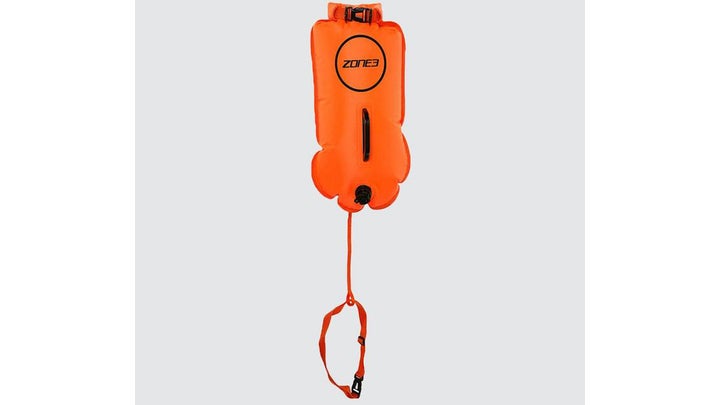
If you’re planning on swimming in the open water alone when you first get back in the water, a safety buoy is basically essential. Not only will this version keep you visible to boaters and other recreational water users, but it also doubles as a small spot to store your dry gear (keys, small towel, etc.) so you can keep everything with you if you’re not comfortable with leaving anything on shore. Also, while it’s not intended as a lifesaving device, depending on your weight and what you store in it, it can also double as a spot to rest between sets while hanging on and floating. A nylon webbing belt fastens around the wearer’s waist, while the buoy itself follows behind via a small leash that keeps the buoy away from the swimmer’s feet.
Sea To Summit Body Wash
$5, Rei.com
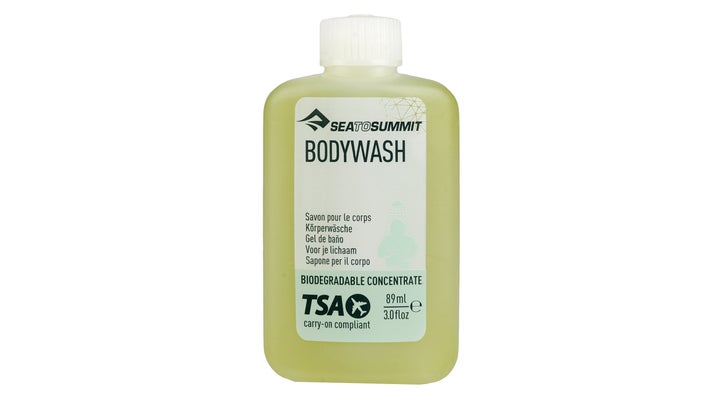
Showers at the beach closed? No problem if you’ve got biodegradable body wash like this small travel-safe bottle from Sea To Summit. You can scrub up in the open water, not worry about harming the environment, and not carry home the funk of a long swim with you in your car. Bonus: If your showers/gym is open, you can use this soap without touching anything the gym might provide.
